The dairy sector in Poland has rapidly increased in recent years with an increase in herd size per farm, increased milk production due to stability, and higher productivity. Currently, processing capacity exceeds production. Poland has a significant role in the dairy sector. Dairy products in Poland are becoming more and more valuable among agricultural food products. In the European Union, Poland ranks third in the number of dairy cattle, after Germany and France. Let’s find out more details about dairy farming in Poland.
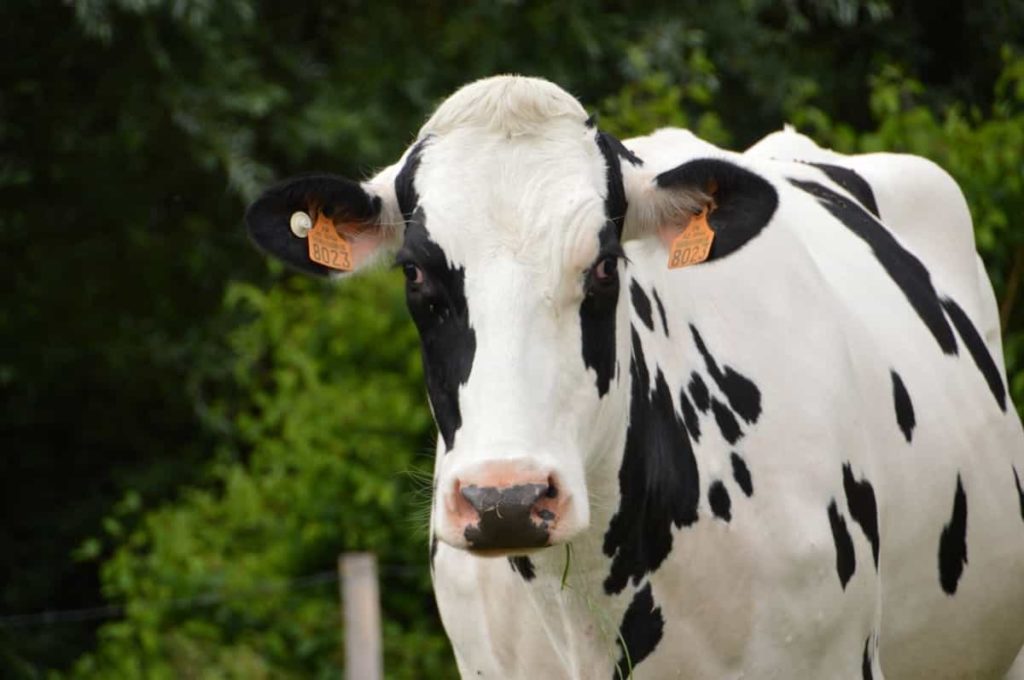
Importance of dairy farming in Poland
On a dairy farm, the cows are kept in excellent condition, look like animals, and have good results from milk and periodic health tests. The food is mainly grass-based; cows graze in summer and get the hay in winter. Cows also derive small amounts of grain and lipoprotein from organic produce. Thus, the farm produces less milk per cow but exceptionally high quality. The essential agriculture sectors in Poland are dairy farming and milk processing. It is of great economic importance, as it is a source of income for many farmers.
Over the years, the Polish dairy industry has followed changing market conditions. As a result, there is more concentration in milk production and processing. This change has led to many well-known and innovative large farms. However, many small or medium-sized ‘family farms’ (about 30% of farms have less than 20 cows) are available in Poland. Poland ranks third in the European Union in dairy cattle (after Germany and France) with about 130,000 dairy farms and about 2.3 million cows.
Milk production in Poland
It is one of the essential branches of the agricultural economy in Poland. It is of great economic importance, as it is a source of income for many farms and serves as the raw material base for the domestic dairy industry. Over the years, the Polish dairy industry has followed changing market conditions, resulting in a concentration of milk production and processing. The state-of-the-art technology, high-quality raw materials, and dairy products make the domestic dairy industry competitive in the international market.
In case you miss this: Dairy Farming in France: Breeds, How to Start
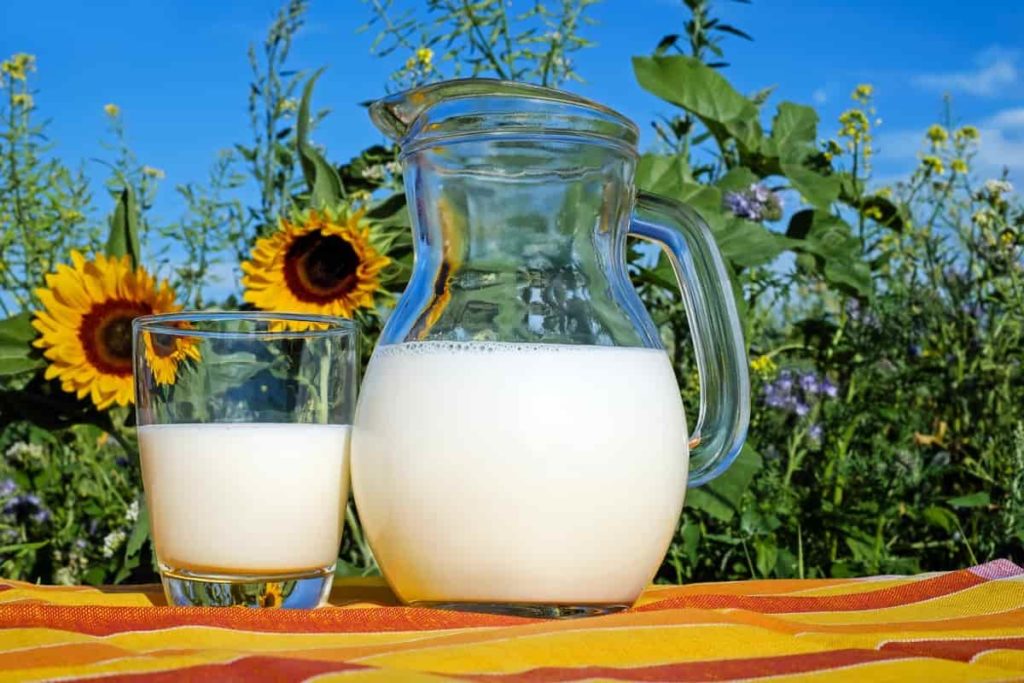
The available assortment offer is adapted to the changing market and consumer needs. In general, milk production is concentrated in central and eastern Poland, in the provinces of Podlasie (20%), Mazowieckie (23% of the total population of dairy cows), Wielkopolskie (12%). Today, most of the milk produced in Poland is based on a very intensive production system and fed with corn and grass silage. In this way, farmers get higher milk production from cows, but at the same time, they have higher production costs.
Milk is mainly sold to large dairy companies at market prices, which can be very volatile. After all, it often turns out that dairy farm milk production is not profitable. Milk producers are looking for alternative ways to produce milk and earn more. Mainly small and medium-sized dairy farms are interested in this type of development.
Dairy cooperatives in Poland
Milk processing in Poland is one of the few food industries with cooperative dominance as a form of management. The main reason for the economic activities of the Dairy Cooperative operating in the country is to get the highest possible price of milk for its members. Dairy cooperatives are an essential part of the dairy industry. Dairy cooperatives will play a vital role in the industry, especially in the context of the Common Agricultural Policy (CAP). Some associations and cooperatives often have different interests and ideas for developing the sector.
Dairy cattle breeds in Poland
The major dairy breeds available in Poland are Holstein and Red Holstein, Simmental, Jersey, Red Polish, Montbeliarde, Polish Black and White and Polish Red and White, Brown Swiss, Swedish Red
Polish Holstein-Friesian (PHF)
It is a significant dairy breed in Poland. This breed was made by cross-breeding the traditional Polish black-and-white and red-white dual-purpose cattle with the Holstein Friesian. 97% of the cows were recorded in Poland (94.51% Holstein and 2.89% Red Holstein).
In case you miss this: Dairy Farming in South Africa: Breeds, How to Start
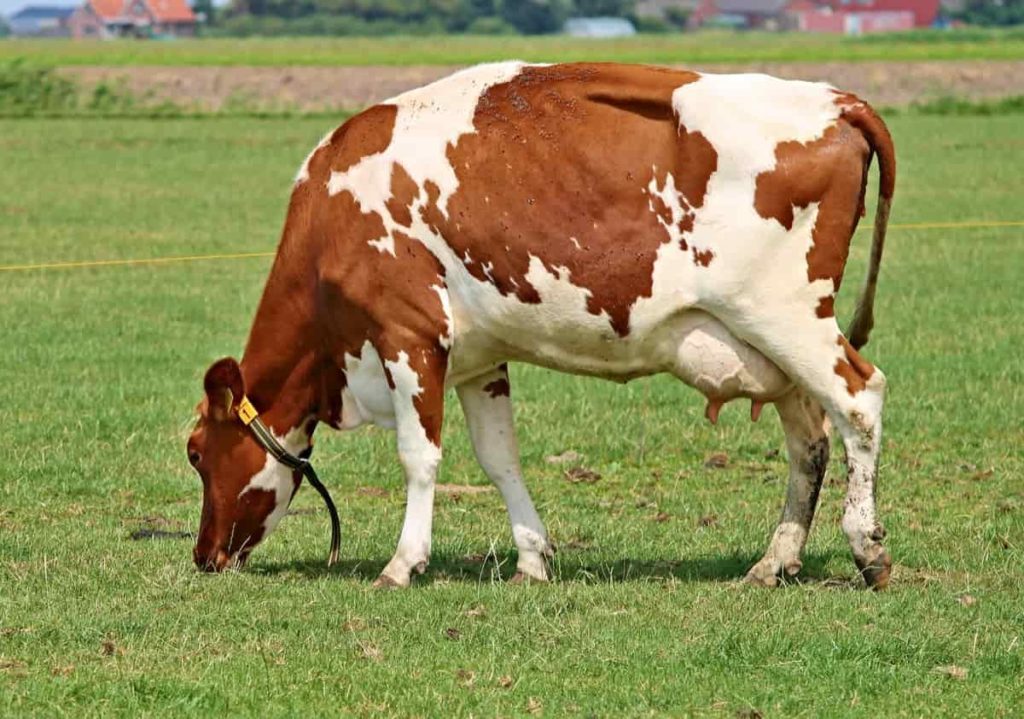
Simmental (SM)
It is a dual-purpose late adult breed located mainly in the southeastern part of Poland. The number of cows recorded was 4600 head (0.88% of total registered cows). Breeding within Simmental in Poland is to maintain relatively large cows’ dual purpose. Its weight is about 650 kg, with an average milk yield of 4500 – 5000 kg per lactation, good longevity and fertility, good slaughter performance, easy weaning, and milking.
Red Polish (RP)
It is the oldest single-color breed in Poland. It has some advantages, like good adaptation, good resistance to diseases like mastitis, leukemia, hoof diseases, excellent fertility, and extraordinary longevity. Good use of poor environmental conditions is typical for this breed. Red Polish cows were very popular in the Hole area of Poland. Currently, this breed accounts for about 1% of the total number of cows in Poland and only 0.29% of the recorded cows.
Montbeliarde (MO)
These were established in Poland only a few years ago when the first heifer was imported from France. But Polish racists are still more and more interested in preserving this race. This breed is prevalent in our country due to its dairy performance, high protein content in milk, maintaining excellent market value of whole cows and young bulls. The French are using bull money to improve Montbeliarde.
In case you miss this: Dairy Farming in Philippines: Breeds, How to Start
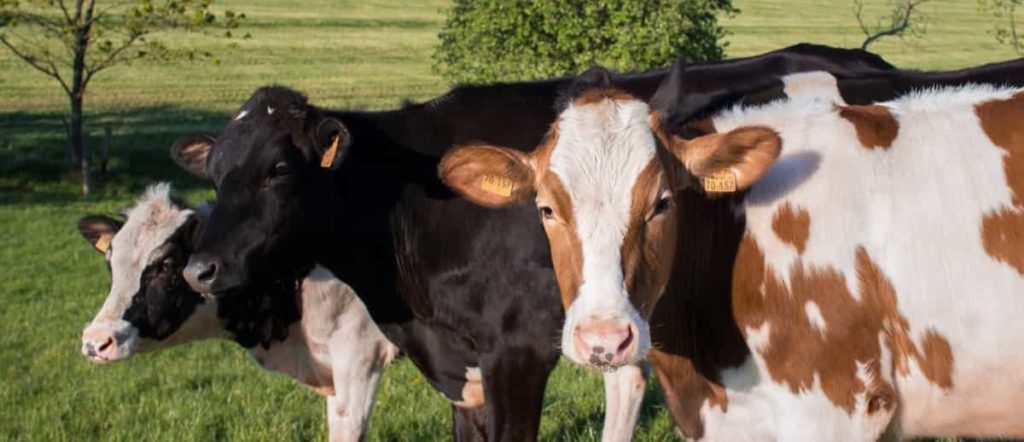
Jersey (JE)
Jersey breeding began in Poland in 1967 when more than 300 heifers and ten bulls were imported from Denmark. There are approximately 1,100 purebred Jersey cows in milk recordings with relatively good dairy performance: 5,070 kg of milk containing 5.4% fat and 3.92% protein. The two most famous breeding centers caring for Jersey cows are Horses Studs in Iwno and Michałow. They received 5663 and 5928 kg of milk per cow, respectively. Polish farmers use jerseys for cross-breeding.
Polish Black White (ZB)
Animals come in many colors, like black and white with red and white spotted gray horns. Adult males weigh 750 kg, females 650 kg, and average withered height is 152 cm and 138 cm, respectively. There are currently about 600 Polish black and white cows in Poland and about 1,200 Polish red and white cows registered in HB. The breed aims to reconstruct an older “compact” type of animal that contains less than 50% of the HF cattle genes. This breed is now protected through a genetic resource conservation program.
In case you miss this: Dairy Farming in Switzerland: Breeds, How to Start
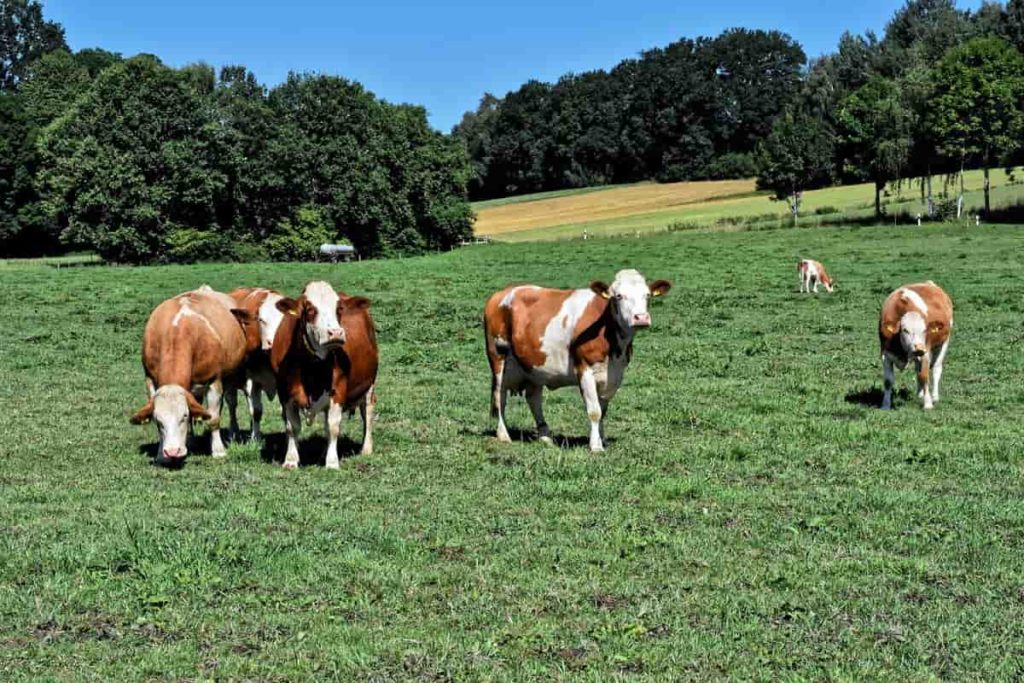
White-back
This breed is usually black and white or red and white with a white stripe on the back. Due to its good adaptation to adverse environmental conditions, strong health, good fertility, good calf ease, high calf energy, and a relatively good ratio of fat and protein in milk. There are just over 250 cows in a white-backed herd.
Swedish Red (SRB)
This breed adapts well to adverse environmental conditions, is fertile, healthy, easy to breed, and withstands high production pressures. The primary purpose of breeding is to genetically improve the dairy breed of cows.
Brown Swiss (BS)
These are dual-purpose breeds; it is not a very popular breed in Poland. Only 300 cows and heifers of this breed are available. This breed is known for good fertility, easy calves, good use of fodder. The purpose of breeding in Brown Switzerland in Poland is to maintain a dual-purpose cow with the benefit of milk parameters.
Consumption of dairy products in Poland
In Poland, the average consumption of dairy products was 81.8 kg per capita. In the opinion of experts – the obstacle to development is probably no longer the wealth of society but the natural competition with other products like meat, plant products, and the image of dairy products as a food component.
Polish consumers are looking for innovative, simple products with good health benefits, but they also look for new flavors, especially in imported products, mainly cheese and yogurt. Consumption, especially of foreign long-ripened cheese, is becoming a trend in Poland. Milk and dairy products are healthy and need to shape consumer attitudes conducive to such promotion.
In case you miss this: Dairy Farming In Indonesia: How to Start, Industry, Market, and Breeds
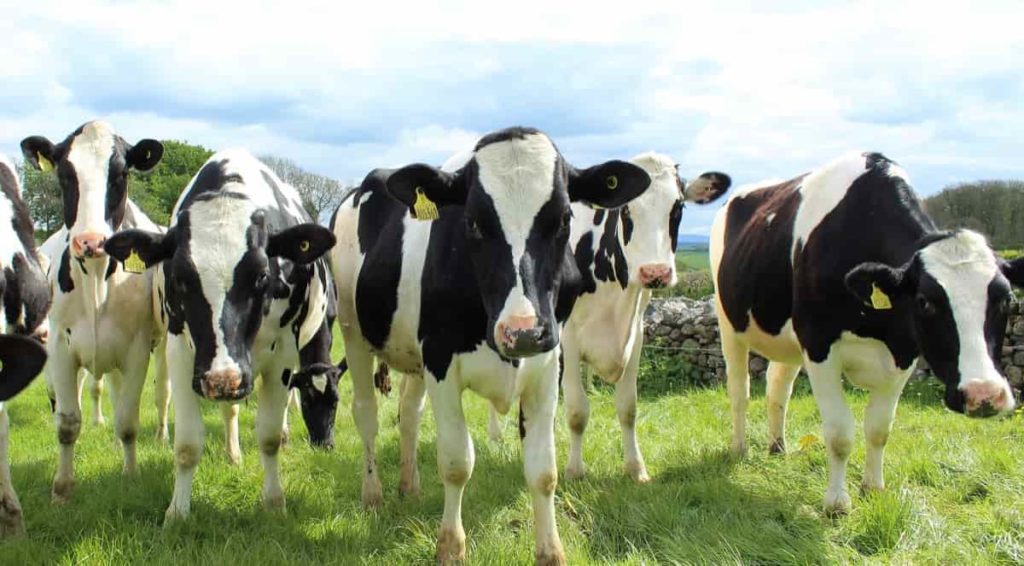
Dairy cattle breeders in Poland
The Polish Federation of Cattle Breeders and Dairy Farmers in Warsaw is the legal representative of dairy cattle breeders in Poland. It became a movement of cattle breeders and milk producers who worked to decentralize breeding and complete socialization. The Polish Federation represents the rights and interests of dairy cattle breeders and dairy producers. It is an independent, voluntary, and autonomous organization that brings together approximately 8,200 members from regional and breed unions.
There are private farms, state farms, treasury state corporations, private collectives, and tenant farms. The Polish Federation works closely with several livestock organizations throughout the country and abroad. The purpose of the Polish Federation is to represent and support its members, in particular;
- To launch strategic operations related to cattle breeding and milk production,
- To promote cattle breeding and milk production,
- Cattle breeding and milk production tasks connected with the regional or countrywide character,
- Coordinating breeding programs and undertaking breeding programs,
- Assisting members of the organization in their legal activities,
- Co-operating with international organizations, milk recording, linked to artificial insemination and cattle breeding,
- Collaborating with domestic AI stations,
- The Polish Federation’s purpose is to maintain the excellent reputation of Polish cattle breeders.
- Types of Pesticides Used in Agriculture: A Beginner’s Guide
- Economical Aquaculture: A Guide to Low-Budget Fish Farming
- 15 Common Planting Errors That Can Doom Your Fruit Trees
- How to Make Houseplants Bushy: Effective Tips and Ideas
- Innovative Strategies for Boosting Coconut Pollination and Yield
- Pollination Strategies for Maximum Pumpkin Yield
- The Complete Guide to Chicken Fattening: Strategies for Maximum Growth
- Natural Solutions for Tulip Problems: 100% Effective Remedies for Leaf and Bulb-Related Issues
- Revolutionizing Citrus Preservation: Towards a Healthier, Greener Future
- Natural Solutions for Peony Leaf and Flower Problems: 100% Effective Remedies
- Maximizing Profits with Avocado Contract Farming in India: A Comprehensive Guide
- Natural Solutions for Hydrangea Problems: 100% Effective Remedies for Leaf and Flowers
- The Ultimate Guide to Choosing the Perfect Foliage Friend: Bringing Life Indoors
- From Sunlight to Sustainability: 15 Ways to Use Solar Technology in Agriculture
- The Ultimate Guide to Dong Tao Chicken: Exploring from History to Raising
- The Eco-Friendly Makeover: How to Convert Your Unused Swimming Pool into a Fish Pond
- Mastering the Art of Delaware Chicken Farming: Essentials for Healthy Backyard Flocks
- 20 Best Homemade Fertilizers for Money Plant: DIY Recipes and Application Methods
- How to Craft a Comprehensive Free-Range Chicken Farming Business Plan
- Brighten Your Flock: Raising Easter Egger Chickens for Beauty and Bounty
- How to Optimize Your Poultry Egg Farm Business Plan with These Strategies
- Subsidy for Spirulina Cultivation: How Indian Government Schemes Encouraging Spirulina Farmers
- Ultimate Guide to Raising Dominique Chickens: Breeding, Feeding, Egg-Production, and Care
- Mastering the Art of Raising Jersey Giant Chickens: Care, Feeding, and More
- Ultimate Guide to Raising Legbar Chickens: Breeding, Farming Practices, Diet, Egg-Production
- How to Raise Welsummer Chickens: A Comprehensive Guide for Beginners
- How to Protect Indoor Plants in Winter: A Comprehensive Guide
- Ultimate Guide to Grow Bag Gardening: Tips, Tricks, and Planting Ideas for Urban Gardeners
- Guide to Lotus Cultivation: How to Propagate, Plant, Grow, Care, Cost, and Profit
- Agriculture Drone Subsidy Scheme: Government Kisan Subsidy, License, and How to Apply Online
- Ultimate Guide to Raising Araucana Chickens: Breed Profile, Farming Economics, Diet, and Care
- Bringing Hydroponics to Classroom: Importance, Benefits of Learning for School Students
- Ultimate Guide to Raising Polish Chickens: Breed Profile, Farming Economics, Diet, and Care
- Ultimate Guide to Raising Australorp Chickens: Profile, Farming Economics, Egg Production, Diet, and Care
- Silkie Chicken Farming: Raising Practices, Varieties, Egg Production, Diet, and Care
- Sussex Chicken Farming: Raising Practices, Varieties, Egg Production, Diet and Care